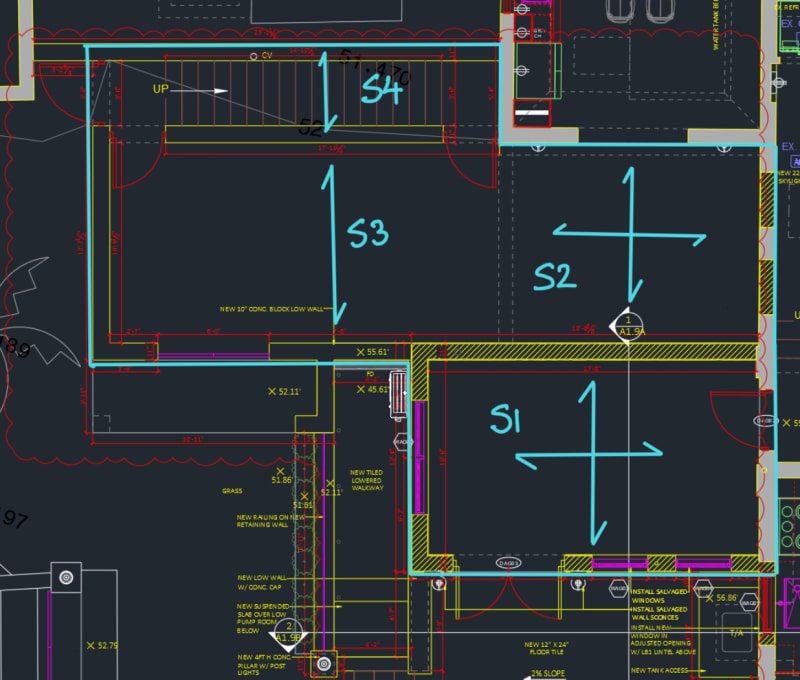Redacted
Structural
- Mar 12, 2016
- 160
Hi there,
I'm working on a project where I need to design the slab for a new floor. See the image below, the new upper suspended slab footprint is shown in blue:

For a situation like this, where there are a mix of one way and two way spanning slabs that will all be poured monolithically, I'll end up with a few locations where the slabs are continuous over either a wall or a beam.
In most books I have looked in, there are coefficients for continuous slabs but they tend to be only applicable when the span lengths are the same.
In a situation like this, where there are different span lengths and different slab types, how should I go about the analysis?
As the entire floor will likely be poured monolithically, this will result in continuous slabs, however, should I be looking at each slab panel independently? E.G. For Slab 1, design it as a slab panel supported on 4 sides and assume the continuous side (between Slab 1 and Slab 2) as fixed and the rest simply supported? Then do the same for Slab 2, design it as supported on 4 sides and assume the continuous sides as fixed. And whichever has the highest hogging moment out of Slab 1 and 2 use that as the top reinforcement; extending the top reinforcement 1/3 the slab length for Slabs 1 and 2?
And then use the same approach for the rest of the slabs?
Any assistance would be helpful on how this is usually done or how it should be done.
I'm working on a project where I need to design the slab for a new floor. See the image below, the new upper suspended slab footprint is shown in blue:

For a situation like this, where there are a mix of one way and two way spanning slabs that will all be poured monolithically, I'll end up with a few locations where the slabs are continuous over either a wall or a beam.
In most books I have looked in, there are coefficients for continuous slabs but they tend to be only applicable when the span lengths are the same.
In a situation like this, where there are different span lengths and different slab types, how should I go about the analysis?
As the entire floor will likely be poured monolithically, this will result in continuous slabs, however, should I be looking at each slab panel independently? E.G. For Slab 1, design it as a slab panel supported on 4 sides and assume the continuous side (between Slab 1 and Slab 2) as fixed and the rest simply supported? Then do the same for Slab 2, design it as supported on 4 sides and assume the continuous sides as fixed. And whichever has the highest hogging moment out of Slab 1 and 2 use that as the top reinforcement; extending the top reinforcement 1/3 the slab length for Slabs 1 and 2?
And then use the same approach for the rest of the slabs?
Any assistance would be helpful on how this is usually done or how it should be done.
